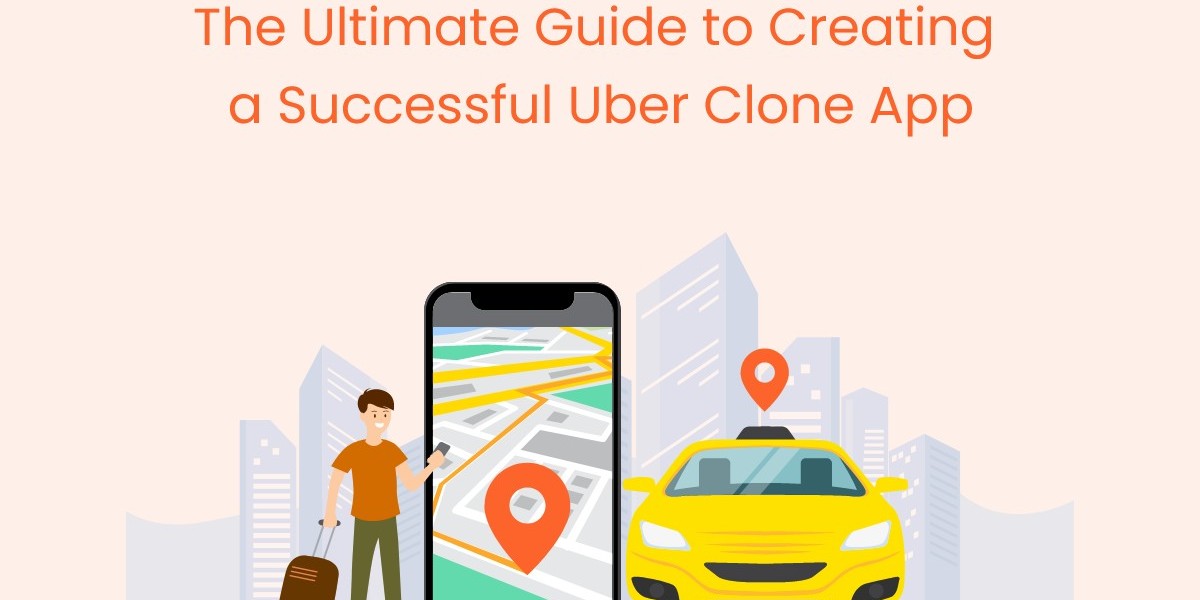The ride-sharing industry has transformed the way people commute, making it an attractive market for entrepreneurs. If you're considering building a successful Uber clone app, it's essential to understand the intricacies of development, from initial planning to post-launch support. This guide provides a comprehensive overview of the key steps involved in creating a successful ride-sharing app.
Understanding the Market and Planning
Before you dive into the development process, it's crucial to conduct thorough market research. Understanding your target audience, analyzing competitors, and identifying market gaps will help you define your app’s unique selling proposition (USP). Research the demographics of your potential users, their preferences, and the common pain points they experience with existing ride-sharing services.
Once you have a clear understanding of the market, start planning your app. Define the core features your app will offer. Essential features for a ride-sharing app include user registration, ride booking, real-time tracking, payment integration, driver management, and a rating and review system. Additionally, consider what unique features can set your app apart from the competition.
Choosing the Right Technology Stack
Selecting the right technology stack is crucial for the performance, scalability, and security of your Uber clone app. Here are some recommendations:
Backend: Use Node.js, Django, or Ruby on Rails to build a robust and scalable backend. These frameworks support high-performance applications and can handle real-time data processing.
Frontend: React Native or Flutter are excellent choices for the frontend. Both frameworks allow you to develop cross-platform mobile applications, ensuring your app runs smoothly on both iOS and Android devices.
Database: Opt for MongoDB if you prefer a NoSQL database, or PostgreSQL for a relational database. Both options are scalable and can handle large volumes of data.
Additional Tools: Integrate Google Maps API for real-time navigation and location tracking. Use Twilio for SMS and communication functionalities. For payment processing, consider integrating Stripe or PayPal.
Developing Essential Features
To build a successful Uber clone app, focus on developing the following essential features:
User Registration: Provide multiple options for users to sign up and log in, such as email, phone number, or social media accounts.
Ride Booking: Design an intuitive interface that allows users to book rides quickly and easily. Users should be able to select pickup and drop-off locations, view available drivers, and choose their preferred ride type.
Real-Time Tracking: Implement GPS-enabled tracking so users can monitor their driver's location and estimated arrival time in real-time.
Payment Integration: Ensure secure and seamless payment processing by integrating reliable payment gateways like Stripe or PayPal. Offer multiple payment options, including credit/debit cards, digital wallets, and cash.
Ratings and Reviews: Allow users to rate their ride experience and provide feedback. This feature helps maintain service quality and builds trust among users.
Driver Management: Create a separate interface for drivers to manage their profiles, accept ride requests, and track their earnings.
Admin Panel: Develop a comprehensive admin panel to oversee and manage the entire operation. The admin panel should include dashboards for monitoring rides, user activity, and earnings, as well as tools for managing drivers and handling customer support.
Designing an Intuitive User Interface
A user-friendly and visually appealing interface is critical for retaining users. Focus on creating a clean, simple, and intuitive design that offers easy navigation. Consistency in design elements, such as colors, fonts, and icons, helps in providing a seamless user experience. Ensure your app is responsive and performs well on various devices.
Testing and Quality Assurance
Thorough testing is essential to identify and fix any bugs or performance issues before launching your app. Conduct various types of testing, including:
Unit Testing: Test individual components of your app to ensure they function correctly.
Integration Testing: Verify that different components of the app work together seamlessly.
User Acceptance Testing (UAT): Conduct real-world testing with a group of potential users to gather feedback and make necessary adjustments.
Deployment and Launch
Once your app passes all testing phases, prepare for deployment. Ensure you comply with the guidelines of the Google Play Store and Apple App Store to avoid rejection. Prepare necessary documentation, marketing materials, and a comprehensive launch plan.
Post-Launch Support and Maintenance
Launching your app is just the beginning. To ensure long-term success, provide ongoing support and maintenance. Monitor app performance, gather user feedback, and release regular updates to fix bugs, improve features, and introduce new functionalities.
Marketing and User Acquisition
A robust marketing strategy is essential to attract and retain users. Utilize various marketing channels, such as social media, search engine optimization (SEO), content marketing, and paid advertising, to promote your app. Encourage user engagement through referral programs, discounts, and loyalty rewards.
Conclusion
Building a successful Uber clone app requires meticulous planning, choosing the right technology stack, developing essential features, designing an intuitive user interface, thorough testing, and effective marketing. By following this ultimate guide, you can create a competitive and user-friendly ride-sharing app that meets market demands and provides an excellent user experience. With dedication and the right approach, your Uber clone app can thrive in the dynamic ride-sharing industry.








